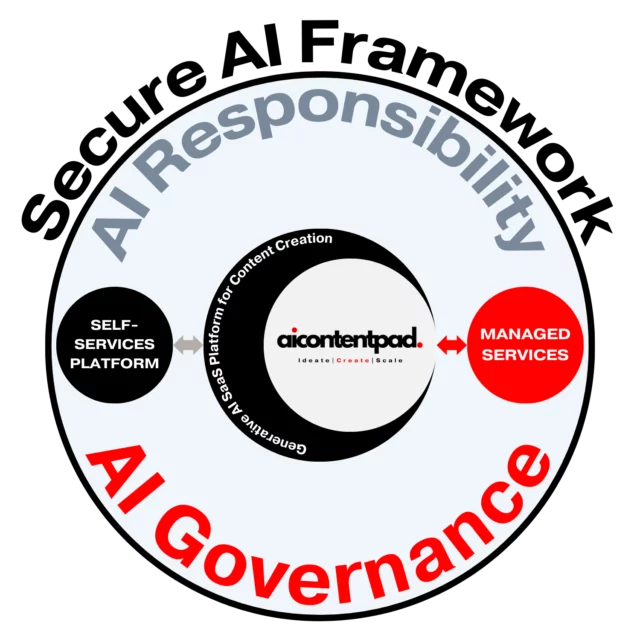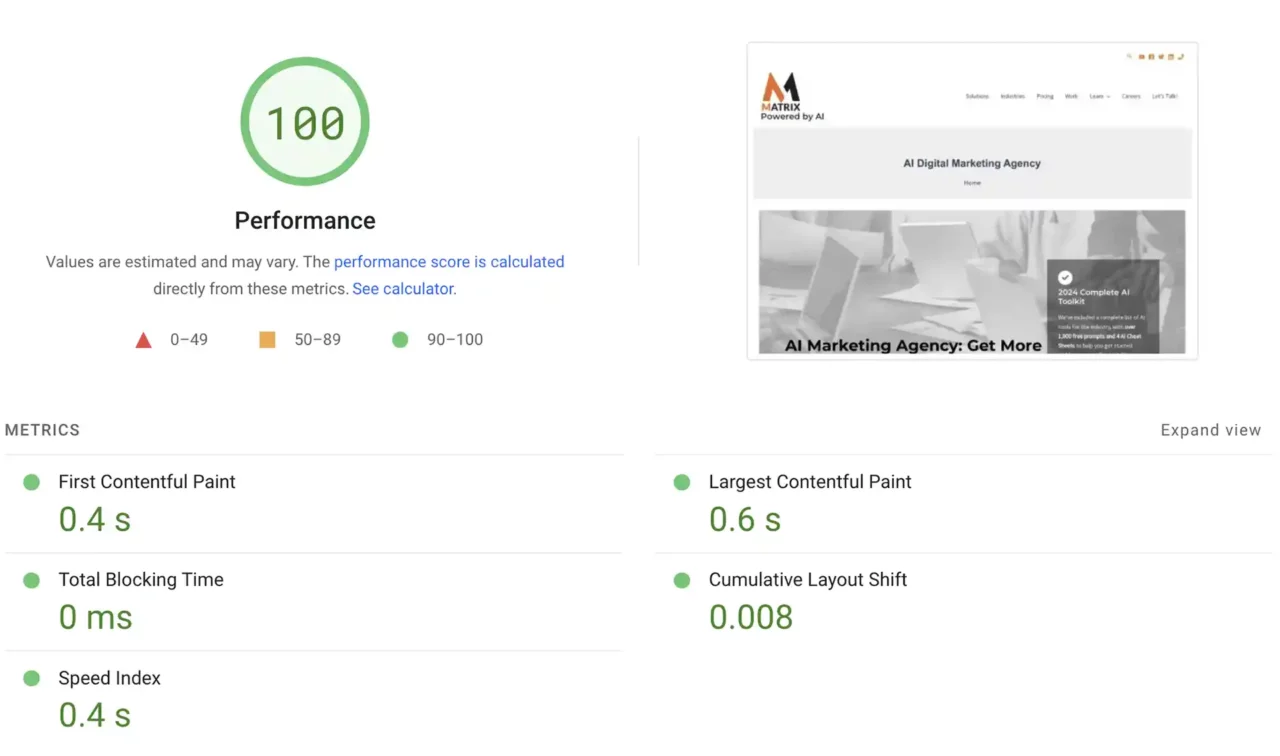Maximizing Impact Through Strategic Content: A Guide for Discrete Manufacturing Companies
The manufacturing industry is significantly transforming in today’s fast-paced, technology-driven world.
Discrete manufacturing companies, which produce distinct items like automobiles, appliances, and electronics, must adapt to changing market dynamics, technological advancements, and shifting customer expectations.
Developing a comprehensive content strategy is one of the most critical aspects of navigating these challenges. Content is no longer just a marketing tool but a vital component of business success, serving as a bridge between companies and their customers.
Content is crucial for discrete manufacturing companies to build brand awareness, educate customers, and establish authority in the industry.
From product announcements to technical documentation, a well-rounded content strategy encompasses various content types that cater to different stages of the buyer’s journey.

This article delves into the essential content types that discrete manufacturing companies must focus on and offers best practices for creating and leveraging these assets to achieve business objectives.
Think of a CMO in the discrete manufacturing industry as the conductor of a symphony orchestra. Each piece of content—a product announcement, case study, or webinar—is like an instrument in the orchestra.
When played in harmony and with precision, these content types create a powerful symphony that resonates with the audience, building brand awareness, trust, and engagement.
Just as a conductor carefully selects and cues each instrument to maximize the performance’s impact, a CMO must strategically deploy and coordinate content to ensure the company’s message is clear and compelling. It reaches the right audience at the right time. The result is a seamless, well-orchestrated content strategy that drives business success.
At AIContentPad, we offer industry-specific models that help businesses harness the potential of foundational models.
]These models can enhance the intelligence and efficiency of operations within specific business domains or experimental functional areas.
Our carefully crafted 10-step process guides organizations through the implementation of generative AI, particularly in the marketing and sales domains, ensuring that they can unlock the full value of this technology.
II. Product Announcements and Updates

Product announcements and updates are fundamental to keeping customers informed and engaged. In the competitive landscape of discrete manufacturing, staying ahead of the curve with innovative products is crucial.
However, more than simply developing new products is required; companies must effectively communicate these innovations to their audience.
Importance of Keeping Customers Informed About New Products
Customers today are more informed and discerning than ever before. They actively seek information about new products and technologies that meet their needs.
By regularly sharing product announcements and updates, companies can:
- Build anticipation: Announcing a new product well in advance can create excitement and anticipation among customers and stakeholders.
- Demonstrate innovation: Regular product updates showcase a company’s commitment to innovation and continuous improvement.
- Strengthen customer relationships: Keeping customers in the loop about product developments fosters trust and loyalty.
Best Practices for Announcing Product Launches and Updates
To maximize the impact of product announcements, discrete manufacturing companies should consider the following best practices:
- Use multiple channels: Leverage a mix of channels, including press releases, email campaigns, social media, and the company website, to reach a broad audience.
- Highlight key features and benefits: Focus on what sets the product apart and how it addresses specific customer pain points.
- Include visuals and demonstrations: High-quality images, videos, and 3D models can help customers better understand the product.
- Incorporate customer testimonials: Include feedback from early adopters or beta testers to add credibility.
- Provide clear next steps: Whether it’s a call to action to learn more, schedule a demo, or place a pre-order, ensure customers know what to do next.
III. Case Studies and Customer Success Stories

Case studies and customer success stories are powerful tools for building credibility and showcasing a company’s expertise.
They provide real-world examples of how a company’s products or services have solved specific customer challenges, making them invaluable assets in the content arsenal.
How Case Studies Build Credibility and Showcase Expertise
Case studies are more than just testimonials; they are in-depth analyses of how a product or service has been successfully implemented.
They help prospective customers understand the tangible benefits of working with a company, offering proof that the company can deliver on its promises. Additionally, case studies:
- Demonstrate problem-solving capabilities: They show how a company can address complex challenges and deliver effective solutions.
- Highlight industry knowledge: By focusing on specific industries or applications, case studies can establish a company as an expert in those areas.
- Build trust: Potential customers are likelier to trust a company with a proven track record of success.
Tips for Crafting Compelling Customer Success Stories
Creating impactful case studies requires careful planning and execution.
Here are some tips to ensure your case studies resonate with your audience:
- Choose the right stories: Focus on projects that showcase your company’s strengths and align with the needs of your target audience.
- Follow a clear structure: A typical case study introduces the customer, their challenges, the solution provided, and the results achieved.
- Use data to support your claims. To demonstrate the impact of your solution, Include quantifiable results, such as percentage improvements, cost savings, or time reductions.
- Incorporate visuals: Photos, charts, and graphs can help illustrate the story and make the content more engaging.
- Highlight customer testimonials: Direct quotes from satisfied customers add authenticity and can convince others to choose your company.
IV. White Papers and E-books
White papers and e-books are essential components of a content strategy for discrete manufacturing companies.
They offer in-depth, authoritative content that can educate and inform existing and potential customers.
These long-form content pieces are particularly effective for companies operating in complex industries where customers need detailed information to make informed decisions.
Value of In-Depth, Authoritative Content in Manufacturing
In the manufacturing industry, decisions are often made based on technical specifications, performance metrics, and long-term value.
AI-generated white papers and e-books provide the space to delve into these details, offering:
- Thought leadership: These documents position a company as a thought leader by addressing industry trends, challenges, and solutions.
- Educational value: They can educate customers on new technologies, processes, or methodologies, helping them make informed decisions.
- Lead generation: High-quality white papers and e-books can be gated behind lead capture forms, generating valuable leads for the company.
How to Choose Topics and Structure White Papers and E-books
Selecting the right topics and structuring the content effectively is crucial for the success of white papers and e-books. Consider the following tips:
- Focus on industry pain points: Choose topics that address common challenges or emerging trends in your industry. For example, a white paper on the benefits of Industry 4.0 technologies in discrete manufacturing could attract significant interest.
- Conduct thorough research. To enhance credibility, back up your content with data, research findings, and expert opinions.
- Use a clear, logical structure: Start with an introduction outlining the problem or topic, then a detailed analysis, and conclude with actionable recommendations or insights.
- Include visuals and diagrams: Visuals, such as flowcharts, diagrams, and infographics, help explain complex concepts.
- End with a strong call to action: Whether it’s encouraging readers to contact your sales team, download additional resources, or attend a webinar, make sure the next steps are clear.
V. Video Content and Webinars

Video content and webinars have become increasingly popular in the manufacturing industry.
They offer dynamic and engaging ways to showcase products, demonstrate processes, and educate customers.
These formats are particularly effective for discrete manufacturing companies, where visual demonstrations can significantly enhance understanding.
Role of Video in Demonstrating Products and Processes
In the manufacturing industry, seeing is often believing. Video content allows companies to:
- Showcase product features and benefits: Videos can highlight key features and demonstrate how a product works in real-world scenarios.
- Provide virtual factory tours: Offering a behind-the-scenes look at your manufacturing processes can build trust and transparency.
- Create customer testimonials: Video testimonials are more personal and impactful than written ones, allowing customers to share their positive experiences in their own words.
How Webinars Can Educate and Engage Your Audience
Webinars are an excellent way to engage with your audience in real-time, offering educational content to help them solve problems or make informed decisions.
To maximize the effectiveness of webinars:
- Choose relevant and timely topics: Focus on issues at the top of your audience’s mind, such as new regulatory requirements, industry trends, or emerging technologies.
- Involve industry experts: Inviting guest speakers or industry experts to your webinars can add credibility and attract a larger audience.
- Encourage interaction: Use Q&A sessions, polls, and chat features to engage attendees and encourage participation.
- Repurpose webinar content: Record webinars and make them available on-demand, or repurpose the content into blog posts, white papers, or e-books to extend its reach.
VI. Blog Posts and SEO Content

Regularly updating a company blog with high-quality content is a cornerstone of an effective SEO strategy.
For discrete manufacturing companies, blogs are a platform for sharing insights, industry news, and thought leadership, improving search engine rankings, and driving traffic to the website.
The Importance of Regular Blog Updates for SEO and Customer Engagement
Search engines favor websites that consistently publish fresh, relevant content. Regular blog posts can:
- Improve search engine rankings: Each new post provides an opportunity to target specific keywords and phrases that potential customers are searching for.
- Drive traffic to your website: Blog posts can attract visitors through organic search, social media shares, and email campaigns.
- Engage and educate your audience: Blogs are an excellent way to inform your audience about industry developments, company news, and best practices.
Strategies for Selecting Topics and Optimizing for Search Engines
To maximize the impact of your blog posts, consider these strategies:
- Conduct keyword research: Identify the keywords and phrases your target audience is searching for and incorporate them into your blog posts.
- Address common customer questions: Use your blog to answer frequently asked questions, solve common problems, or provide tips and best practices.
- Include internal and external links: Linking to other relevant content on your website can improve SEO, while external links to authoritative sources can enhance credibility.
- Use engaging headlines and visuals: Captivating headlines and eye-catching images can increase click-through rates and encourage social sharing.
- Promote your blog posts: Share your blog content on social media, email newsletters, and other marketing channels to reach a wider audience.
VII. Social Media and Email Campaigns

Social media and email campaigns are vital components of a content strategy. They offer direct and immediate ways to reach and engage with your audience.
These channels can build brand presence, nurture leads, and drive conversions for discrete manufacturing companies.
Leveraging Social Media to Build Brand Presence and Community
While social media might not seem like a natural fit for the manufacturing industry, it can be a powerful tool for:
- Building brand awareness: Regular updates on platforms like LinkedIn, Twitter, and Facebook can keep your company in mind for customers and industry peers.
- Showcasing company culture: Share behind-the-scenes content, employee spotlights, and company milestones to humanize your brand and build a community.
- Engaging with your audience: Respond to comments, participate in industry discussions, and share relevant content to foster relationships with your audience.
Best Practices for Targeted Email Campaigns
Email campaigns remain among the most effective ways to communicate with customers and prospects. To maximize the effectiveness of your email marketing:
- Segment your audience: Divide your email list into segments based on factors like industry, job role, or previous interactions with your company to deliver more relevant content.
- Personalize your messages: To increase engagement, use the recipient’s name and tailor the content to their specific needs and interests.
- Focus on value: Ensure that each email provides value, whether through educational content, exclusive offers, or important updates.
- Optimize for mobile: Many recipients check emails on mobile devices, so ensure that your emails are mobile-friendly and have a responsive design.
- Track and analyze performance: Use analytics to track open rates, click-through rates, and conversions, and use this data to refine future campaigns.
VIII. Technical Documentation and Infographics
Technical documentation and infographics are essential for discrete manufacturing companies.
They provide clear and accessible information that helps customers and stakeholders understand complex products and processes.
Importance of Clear, Accessible Technical Documentation
Technical documentation, such as user manuals, installation guides, and maintenance instructions, is critical for ensuring that customers can effectively use your products. High-quality technical documentation:
- Reduces customer support inquiries: Clear and comprehensive documentation can help customers troubleshoot issues independently, reducing the need for support.
- Enhances customer satisfaction: Well-written documentation ensures customers can fully utilize your products, leading to higher satisfaction and loyalty.
- Complies with industry regulations: Accurate technical documentation is required to meet regulatory standards in many industries.
Using Infographics to Simplify Complex Processes and Data
Infographics are a powerful tool for visualizing complex information in a way that is easy to understand.
For discrete manufacturing companies, infographics can be used to:
- Simplify complex processes: Break down intricate manufacturing processes into clear, step-by-step visuals that are easy to follow.
- Present data engagingly: Use infographics to showcase industry trends, product specifications, or performance metrics in a visually appealing format.
- Enhance technical documentation: Incorporate infographics into user manuals and guides to illustrate key points and make the content more accessible.
IX. Press Releases and Event Promotions

Press releases and event promotions are essential for informing the media, customers, and stakeholders about significant company developments and upcoming events.
These types of content can enhance brand visibility and drive engagement.
How Press Releases Can Enhance Brand Visibility
Press releases are a traditional but highly effective way to announce important news, such as product launches, partnerships, awards, or company milestones. Effective press releases can:
- Generate media coverage: A well-crafted press release can attract the attention of journalists and result in coverage in industry publications, increasing your company’s visibility.
- Build credibility: Consistent announcements of positive news reinforce your company’s position as a leader in the industry.
- Reach a wider audience: Press releases distributed through wire services or posted on your website can reach a broad audience, including potential customers, investors, and partners.
Strategies for Promoting and Recapping Industry Events
Events, whether trade shows, conferences, or webinars, are valuable opportunities to connect with customers and showcase your expertise. To maximize the impact of event promotions:
- Promote events in advance: Use email campaigns, social media posts, and your website to generate buzz and encourage attendance.
- Provide incentives to attend: To encourage participation, offer exclusive content, discounts, or early access to new products.
- Recap the event: After the event, share highlights, key takeaways, and any presentations or recordings with your audience to extend the value of the event and reach those who couldn’t attend.
X. Thought Leadership and Interactive Tools

Thought leadership content and interactive tools are essential for establishing your company as a leader in the discrete manufacturing industry and meaningfully engaging potential customers.
We use a thought leadership scaffolding framework for better customer connection.
Building Authority Through Thought Leadership Content
Thought leadership content, such as articles, white papers, and blog posts, allows your company to share its expertise and insights on industry trends, challenges, and innovations. By consistently producing thought leadership content, you can:
- Establish your company as an industry leader: Sharing unique perspectives and expert knowledge positions your company as a trusted authority in the manufacturing industry.
- Influence industry discussions: Thought leadership content can shape conversations around emerging trends, helping your company stay ahead of the competition.
- Attract high-quality leads: When you demonstrate thought leadership, potential customers seeking expert guidance are likelier to engage with your company.
Engaging Potential Customers with Interactive Tools
Interactive tools, such as ROI calculators, product configurators, and virtual demos, allow potential customers to interact with your brand in a hands-on way.
These tools can:
- Help customers make informed decisions: Tools like ROI calculators allow customers to input their data and see the potential benefits of your products, helping them make more informed purchasing decisions.
- Enhance the user experience: Interactive tools provide a more engaging and personalized user experience, increasing the likelihood of conversion.
- Collect valuable data: These tools can also capture user data, such as preferences or pain points, which can be used to tailor future marketing efforts.
XI. Conclusion
In conclusion, a comprehensive content strategy is essential for discrete manufacturing companies to effectively communicate with their audience, build brand authority, and drive business growth.
By incorporating a diverse range of content types—from product announcements and case studies to white papers, videos, and interactive tools—companies can meet the needs of their customers at every stage of the buyer’s journey.
As the manufacturing industry continues to evolve, companies that prioritize content and continually adapt their strategies to reflect industry trends and customer preferences will be well-positioned to succeed in the competitive landscape.
A well-rounded content strategy enhances brand visibility and credibility and fosters long-term customer relationships, ultimately leading to sustained business growth and success.

